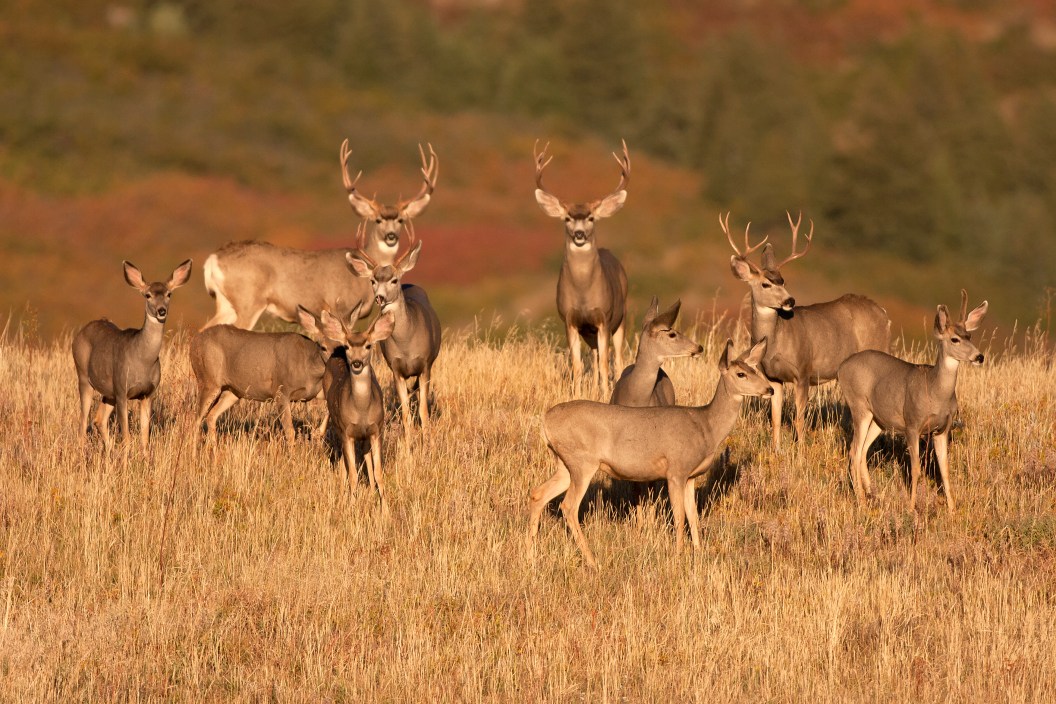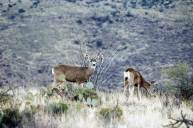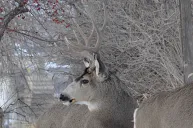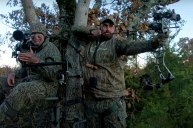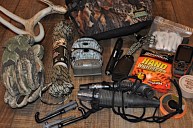Going on your first out-of-state hunting trip is an exciting event—and it can be a daunting one to plan for. But if you have mule deer in mind as a bucket-list target, you most likely will find yourself crossing state lines, as their habitat is much more confined than more-diffuse whitetails.
Your to-do list will be a long one—and mule deer hunting isn't easy. Deciding where to hunt mule deer is your first challenge. These incredible creatures live in Western states and can inhabit some difficult-to-navigate terrain. Planning how to get there and where to stay comes next. But how do you scout a spot thousands of miles away? Then, of course, you need to make sure you have all the right gear and know what to do with your deer once you shoot it.
There's plenty to think about, but once you've got it down, it isn't all that tough. Here's your primer for hunting mule deer out of state.
Choosing Where to Hunt Mule Deer
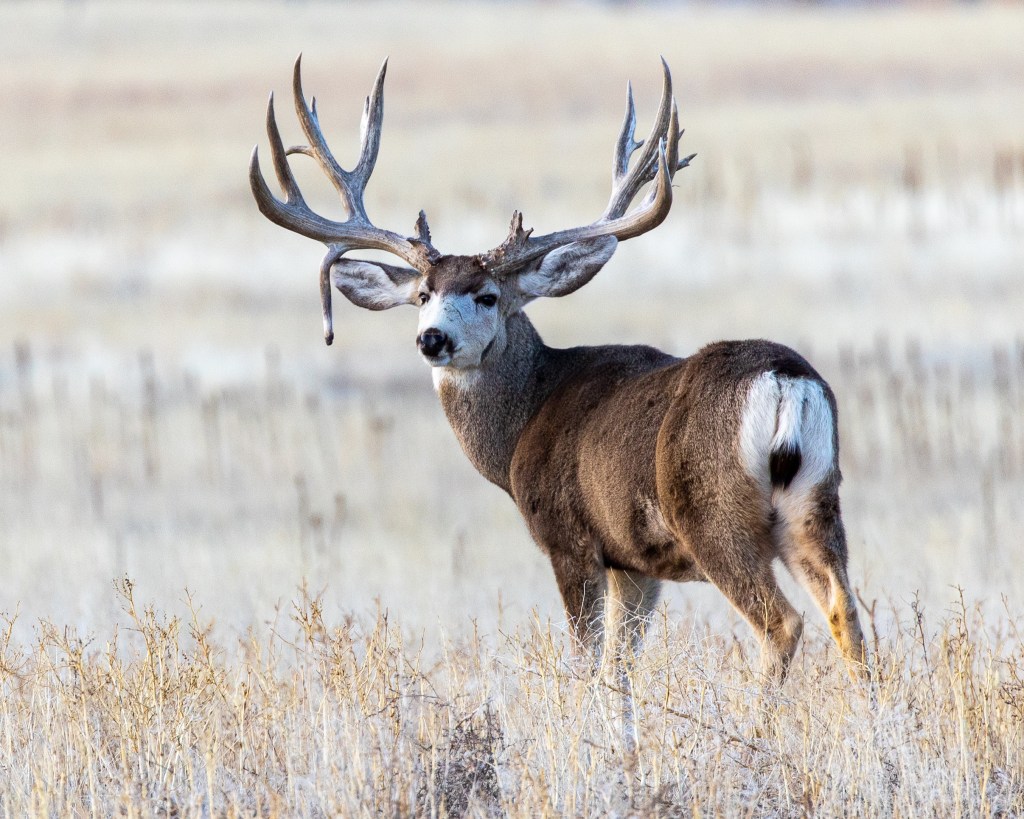
Getty Images, Jeff Edwards
Choosing where to hunt mule deer may seem daunting, but understanding the legal regulations can quickly narrow down your choices. Many Western states that mule deer call home have a point system you will need to figure out for earning a tag. Basically, you need to have a certain number of points to draw a tag.
Some of the best states for mule deer are Colorado, Idaho, Montana, Wyoming, and Nebraska—but the better the hunting, the more competitive the tag. Point systems vary by state; but what's important to know is that while the points accrue, such as in Montana and Wyoming, you may have to wait several years or more to earn your tag to hunt. Other states, such as Idaho, have over-the-counter tags; but even those can be hard to get, and you better plan to log in online on time when tags become available.
Your best bet is to accrue points in as many states as you can afford each year. You will have to enter the draw each year to do that, which usually means prepaying for a tag. Some states refund you if you don't get the tag or give you bonus points for next year, but the whole process is different from state to state. If you've never hunted mule deer, you may opt to accrue some points in the top states, then get an over-the-counter tag in another state and try your best.
E-Scouting Your Hunting Area
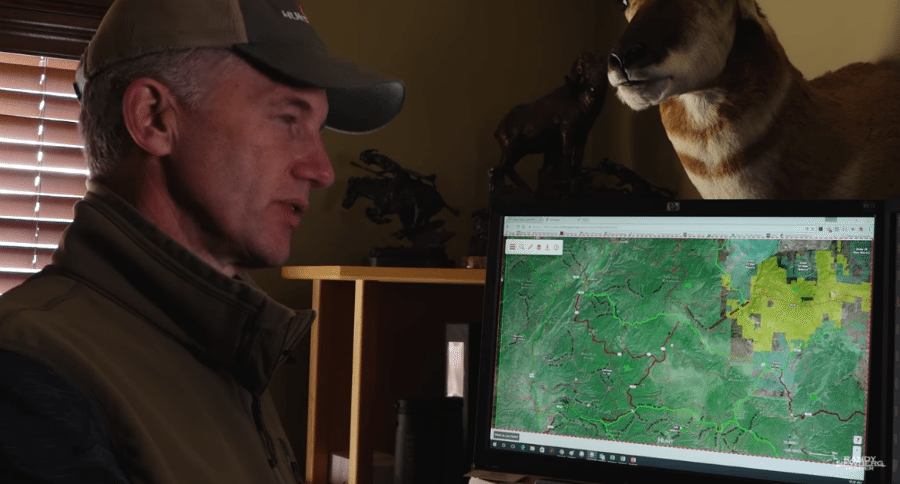
Once you have chosen the state you would like to hunt in, you'll need to decide on specific areas within units and the dates you will hunt. You will draw a tag to a specific unit (area of land); but the unit size can vary, so figuring out where to hunt within a unit can be tough on larger plots. Many Western states have multiple seasons available for mule deer starting in August, and the season you choose will determine where you will need to look for the deer. Mule deer are migratory animals, so the time of year and weather will directly influence where you can find them.
How do you learn where you can expect the deer to be? Just like any hunter: Start scouting. Often, non-resident hunters can't scout on the ground before hunting. This is why it is so important to learn how to "e-scout," or use satellite imagery, topographic maps, and local experts to scout from afar.
There are many great mapping tools available. My favorite is Google Earth. It's free, intuitive, and has great imagery. Other helpful tools include a mapping program with property boundaries, forest roads, gates, snow depth, and more—but you will pay for those features. OnX Maps is a good one to try if you aren't sure where to start. It's never a bad idea to try calling a local biologist or other scientific expert, who can help you pinpoint where the animals are. I've done this a number of times myself, and it works. All you need to do is call the state's Department of Natural Resources or Fish & Wildlife Service and ask for the contact info of a local state biologist.
Scheduling Your Trip
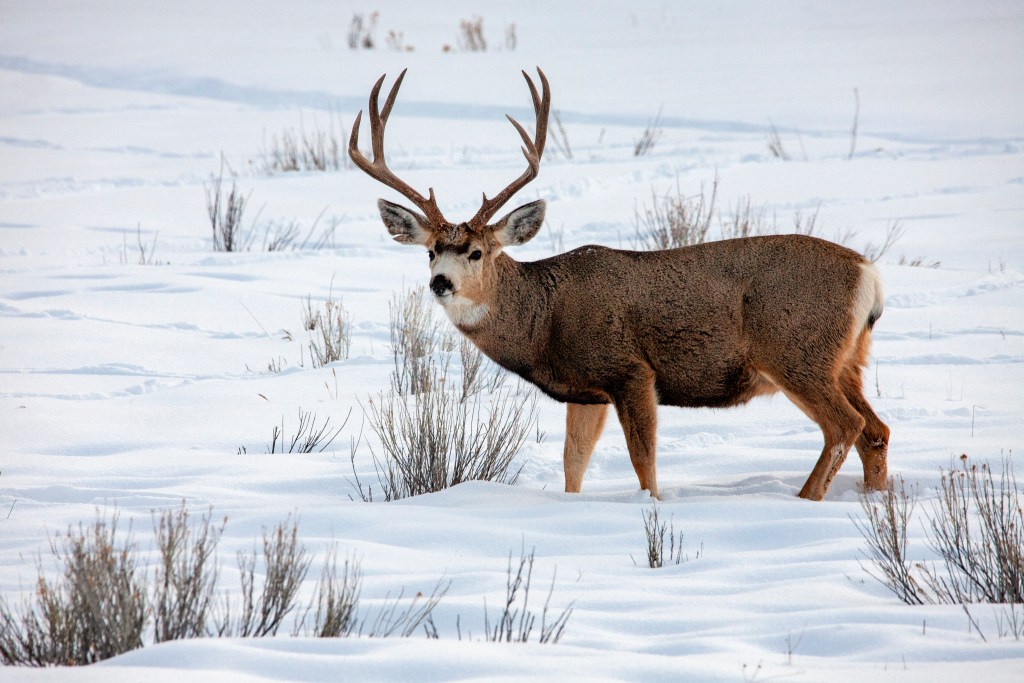
Getty Images, DeniseBush
If you're lucky enough to draw a tag or find an over-the-counter tag, the next step is to schedule your trip. Our advice: Go as long as you can, especially if this is your first out-of-state mule deer hunt. We like to plan two weeks for out-of-state trips, but you'll have to work with what you've got.
Many inexperienced hunters planning an out-of-state hunt consider flying. We recommend driving unless the distance is simply too far or impractical. Flying adds additional uncertainties such as long weather delays, lost luggage, changed flights, plus the hassle of getting your weapon and gear through TSA. While driving, you may also run into bad weather, but you'll have more flexibility and your gear isn't going to be lost or delayed. It'll also be much easier to get your animal home without worrying about how to fly with the antlers or how to pack the meat.
If you have to fly, do plenty of research on how you can get your gear on the plane and the intricacies of flying with firearms. As for the rest of your gear, make sure it is packed tight and secure. While in the woods, you can clip things to the outside of your pack and let them hang, but that isn't going to be great at the airport. Secondly, put plenty of identifiers on your gear so it doesn't get mixed up with anyone else's. I like to use camo-colored duct tape on my cases, which no one else usually has. Lastly, be extra particular about your flight out to your camp. You do not want to miss that flight!
Packing the Right Gear
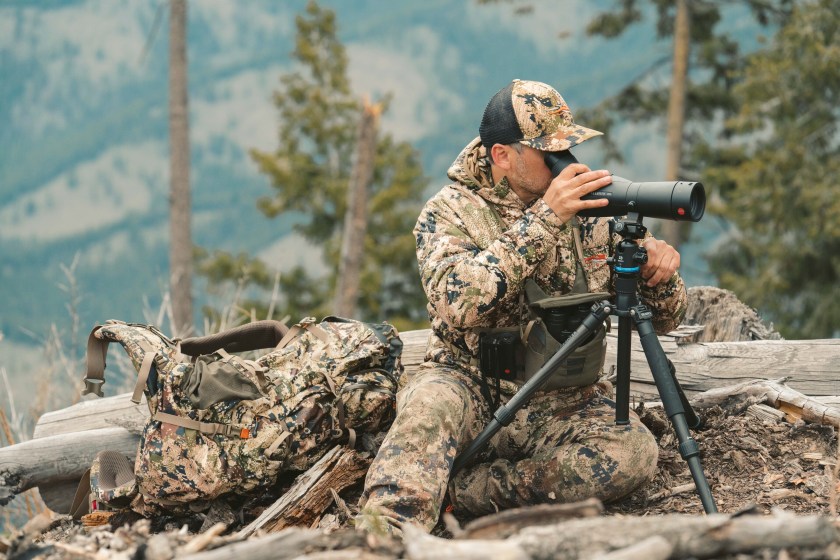
Sitka Gear
For mule deer, you'll likely be spot-and-stalk hunting. That means packing what you need to "spot" a target. A good set of hunting binoculars is your No. 1 concern, and a tripod is a good idea so you don't have to hold them all day. A spotting scope also has merit if you want to get a better look at a deer before you decide whether to go after it.
Of course, you'll also need to pack the right hunting clothes. Watch the weather for a few weeks before a hunt, because you do not want to get out there and be cold. If you plan to camp, make sure you have all the right gear to set up a base camp: a good tent, sleeping bag, sleeping pad, and some food that isn't going to go bad. For provisions, freeze-dried food works and jerky is a great choice, but cans are likely too bulky. Decide whether to bring a camping stove or make a campfire—you'll need a few tools even for that.
Then make sure you have all the business-end gear ready to go. Your hunting boots are vital because you'll be covering a lot of ground. Your rifle should be in tip-top shape, and your knives and processing gear should be ready to go after the shot.
Make a physical list of all the gear you'll need, and really think about it. Then go over it twice and physically check that you have everything packed. Once you get out there, you've got what you've got—and if you forget something important, well, you might have to make do or waste time going to the nearest town to buy it.
Preparing Your Harvest for Transport
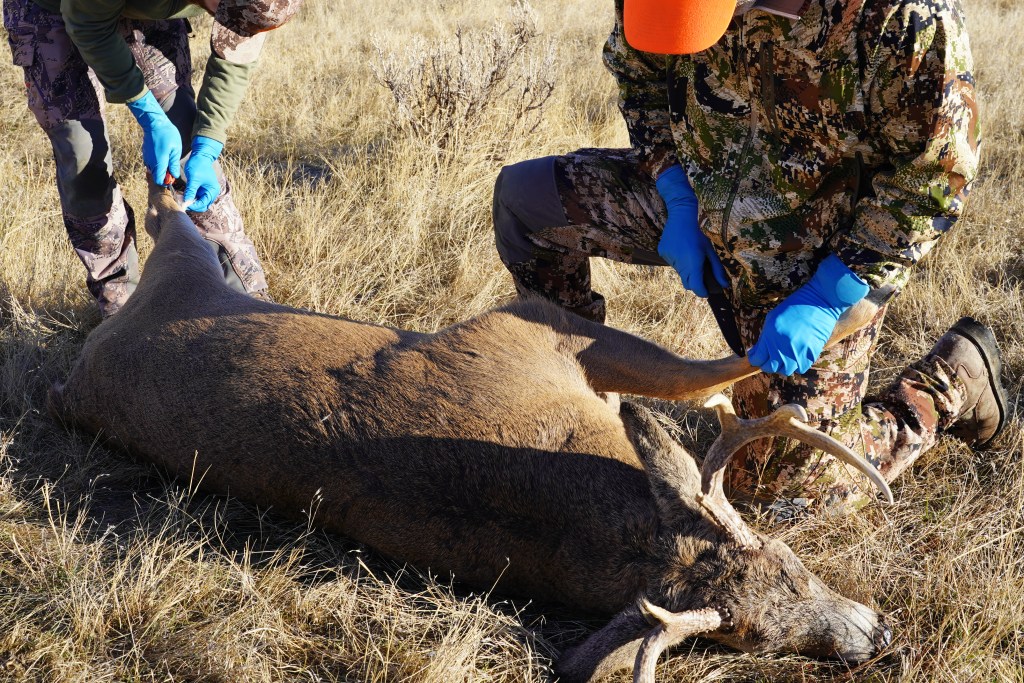
Getty Images, Melissa Kopka
One of the most important things to consider when planning an out-of-state mule deer hunt is how to get the meat, antlers, and cape home. With a little planning, it's one of the easiest parts of the hunt.
Meat care starts before you even recover the animal. Before you go hunting for the day, have a plan if you harvest something. First, you need a field dressing kit and game bags to put the meat in after quartering the animal. If it's above freezing, you need to have a cooler or two full of ice or have located a cold stream where you can submerge the meat sealed inside bags until you can get ice or get the meat to a locker in town.
If storing the meat in a cooler, remember to avoid having the meat sitting in water from the melted ice. You should drain all the water in the cooler several times a day. You also never want to keep your meat sealed in a bag long-term. As soon as you can get it in a cooler with ice, ditch the bags. Letting your meat sit in water, or holding the water to it with bags, greatly increases bacterial growth and can ruin your meat.
As for the cape and antlers, we suggest bringing another dedicated cooler just for them. Mule deer aren't small, so I will likely bring three coolers if I want a shoulder mount: two for the meat, one for the cape and head. Ideally, the head doesn't fit in a cooler, and that's all right. If it's just you and you are headed back after you take a deer, you can let the head prop the cooler open. As long as you keep ice in the cooler, the cape will be good until you can get it to a trusted taxidermist back home.
After you get a few shoulder mounts on the wall and realize how expensive they are, you may get interested in European skull mounts. You can do these yourself and save plenty of money. Plus, if you go this route, you can cut the head off your mule deer and put it in a trash bag in the truck, and ditch the third cooler.
Heading Home
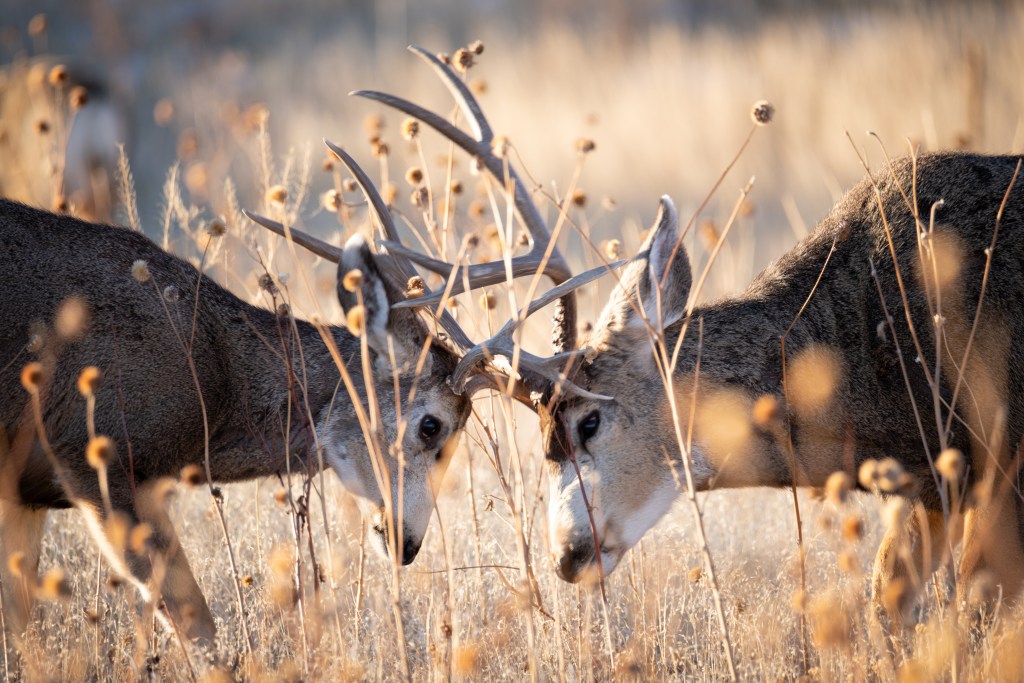
Getty Images, Jeff Willener
On your way home after a successful out-of-state hunt, you'll likely already be reliving the memories made and starting to plan your next one. There's something about the adventure and novelty of hunting in a new state that will keep you yearning for more. If you have a long drive, always make sure to keep your eyes and mind on the road, and check on the ice in your full coolers when you stop to get gas.
READ MORE: The Best States for Mule Deer Hunting
